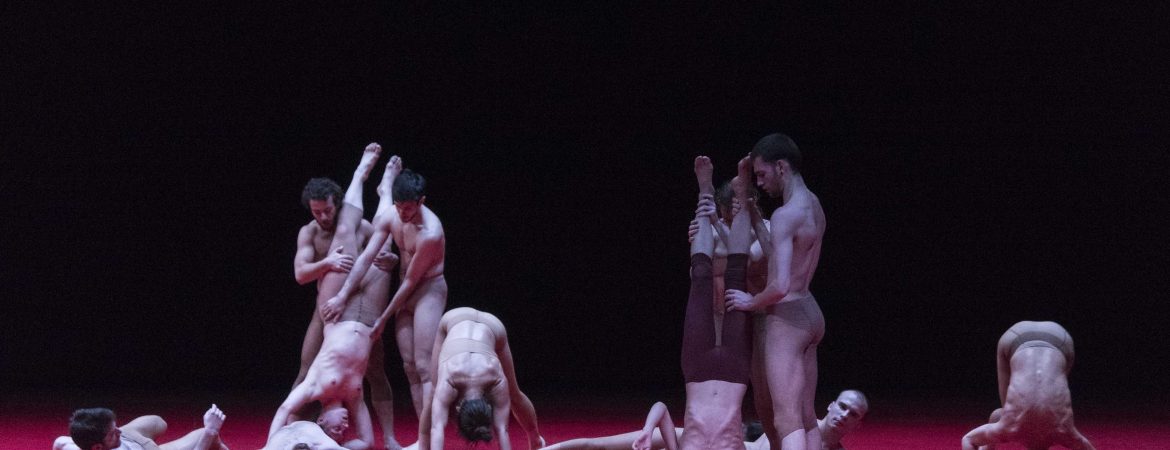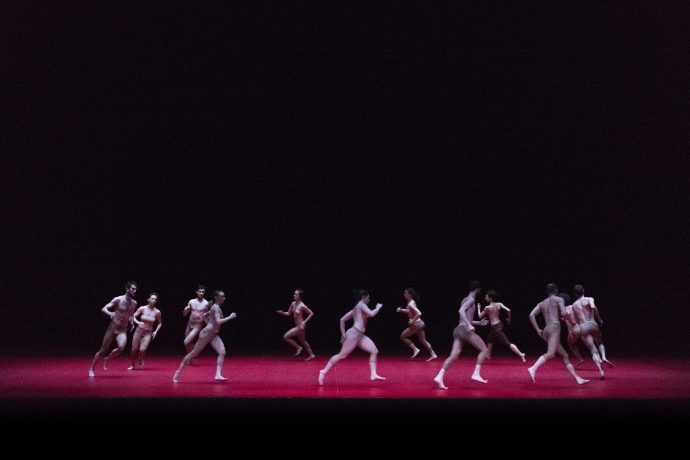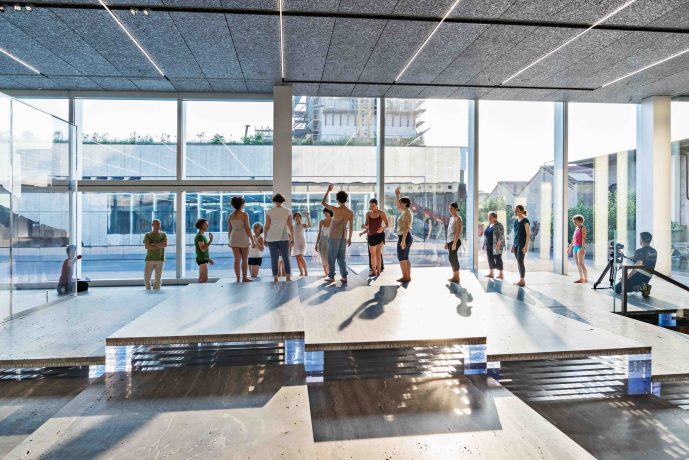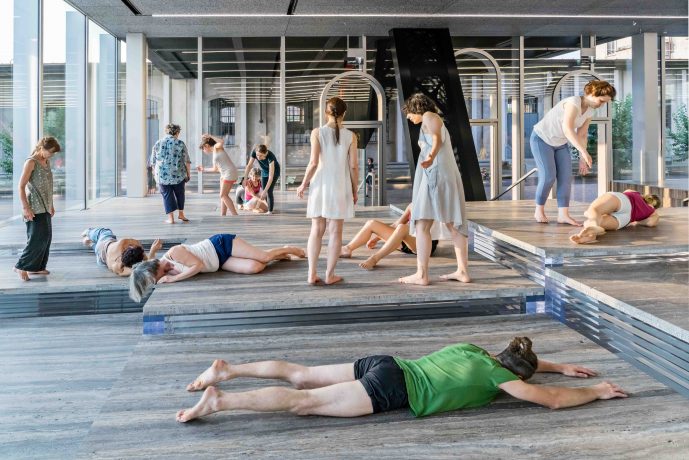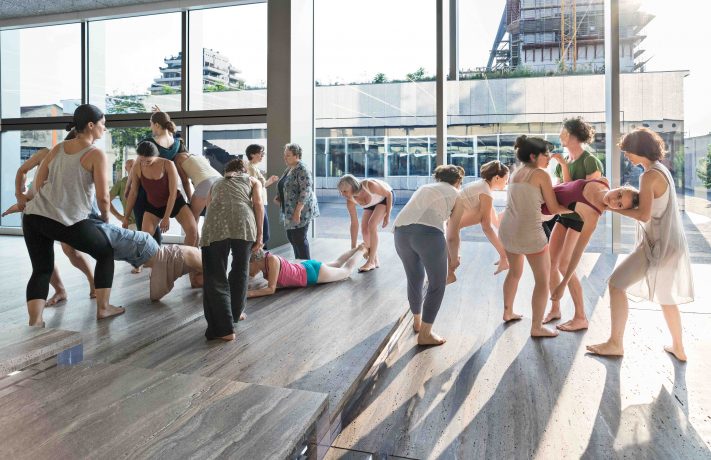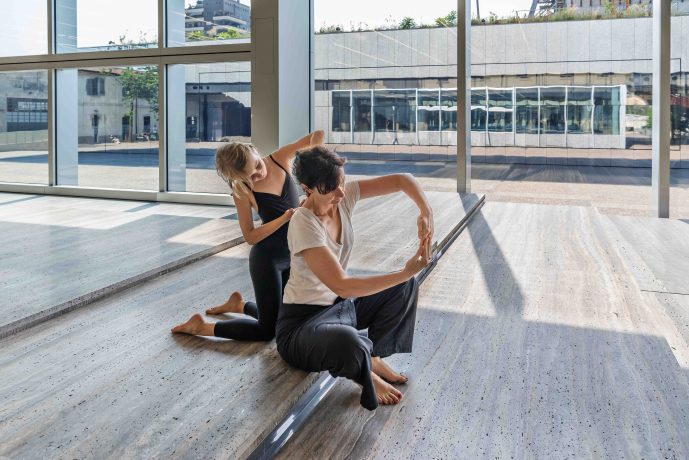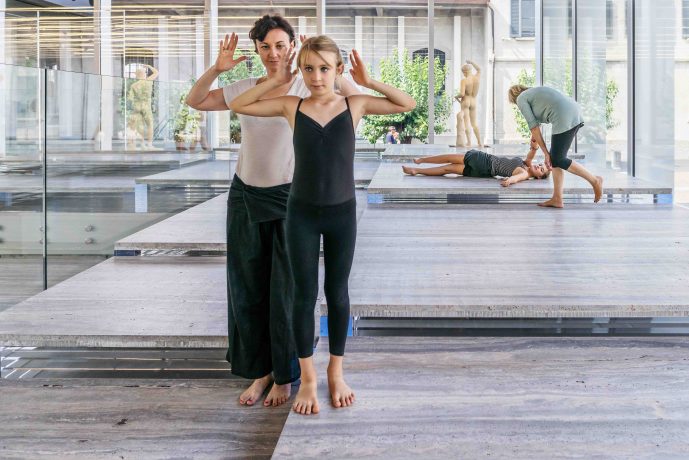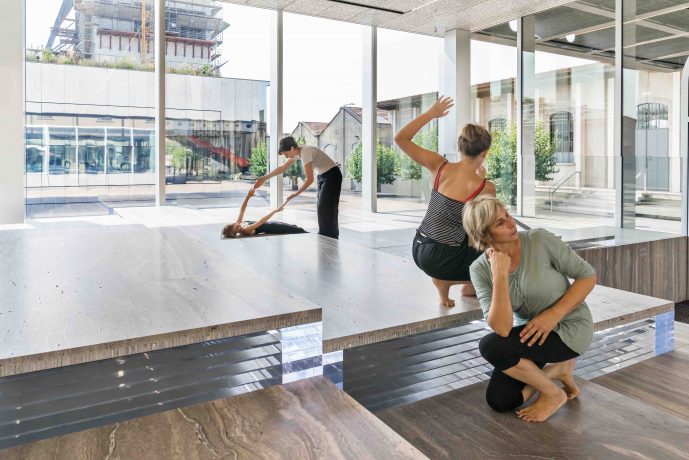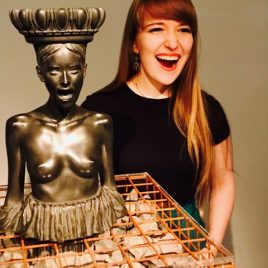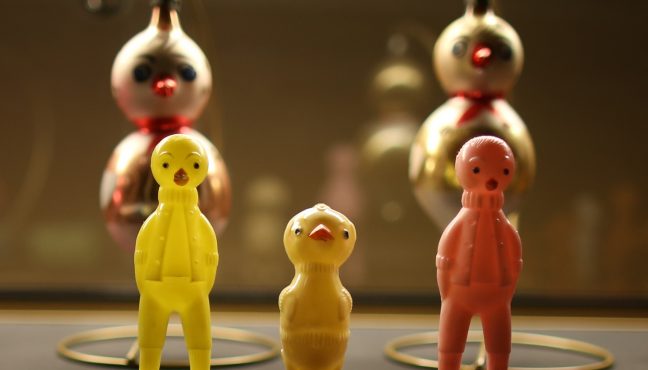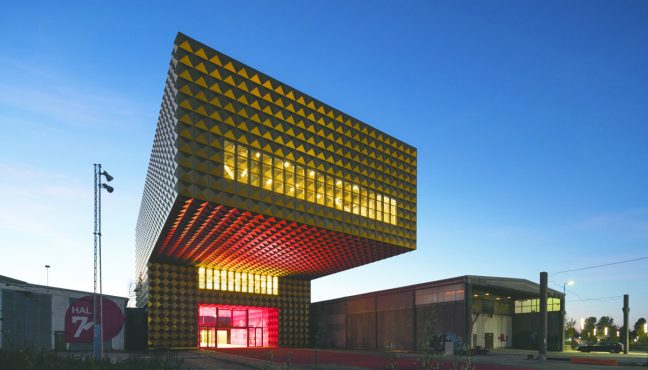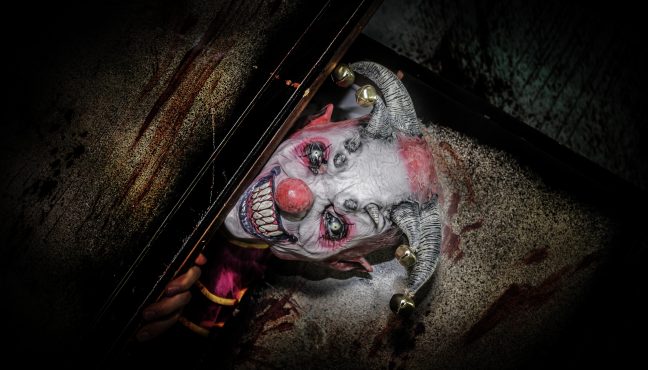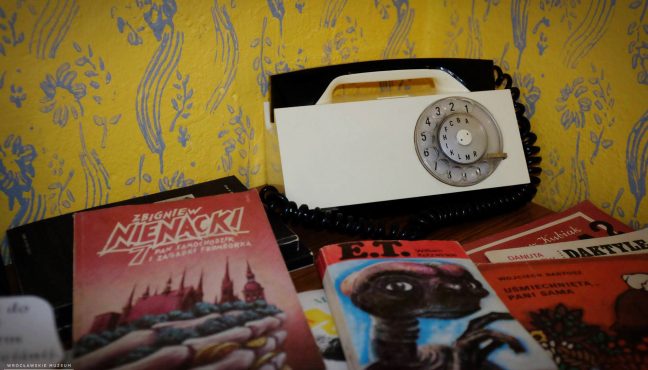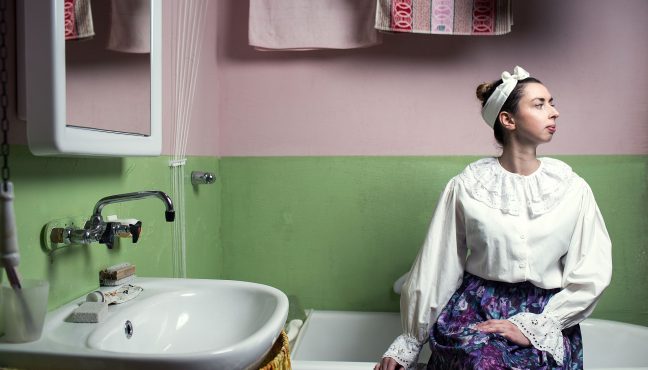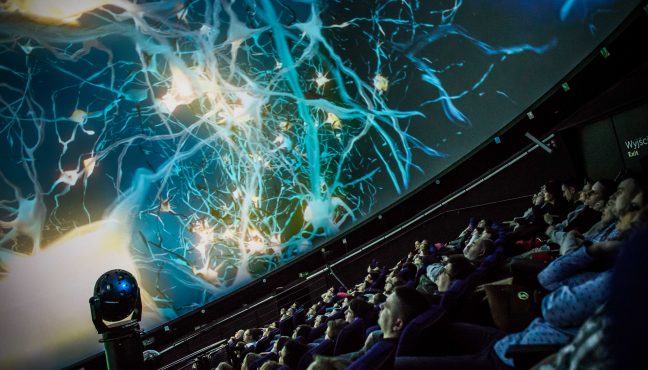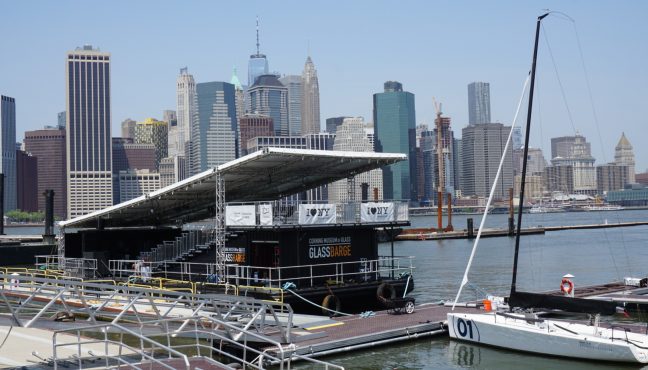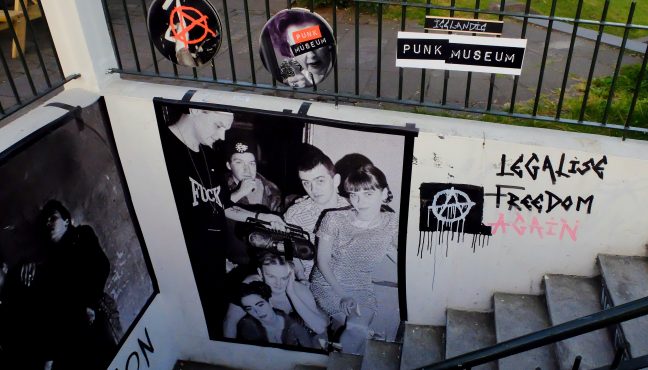While looking at ancient Greek or Roman statues, have you ever wondered what their movements would be like should they come to life? Thanks to Fondazione Prada in Milan, we have a chance to imagine how ancient artists used to see the world and people around them and explore art through movement. Fondazione Prada invited Virgilio Sieni, a leading choreographer in the Italian contemporary dance scene to create ballet performances, mirroring the exhibition Serial Classic. The debut of this unique project, “Atlante del gesto” (Atlas of gesture), took place in September and we hope to see more choreographed performances like this in the future.
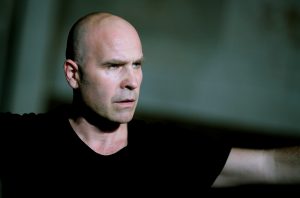
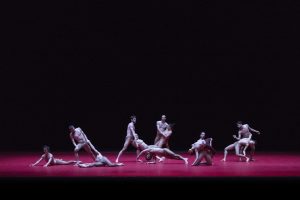
While seated in the beautiful Rem Koolhaas-designed building, the audience of “Atlante del gesto” were taken by the performers on a wonderful journey accompanied by two musicians, Roberto Cecchetto and Michele Rabbia. They lured the visitors into the world of still art and contemporary dance. The performance was divided into five sections including Origine (Origin), reflecting the mother-son relationship that comes with difficulties, beauty, happiness and suffering; Rituale (Ritual), when dancers moved in accordance with the transmission of continuously varying gestures and dynamics; Annuncio (Announcement), where non-professional performers and dancers, appearing as angels, combined alleged imperfection and very difficult slow movement; Gravità (Gravity), where dances explored the concept of space, time and the rules of gravity; Nudità (Nudity) where we saw the simplest movements, that arranged and framed would comprise a complex choreographic spectacle.
“Atlante del gesto” is not the first shot at choreographic actions in museums (and we hope not the last). Nowadays this way of interaction is much needed to draw more of us to museums. Fondazione Prada specified their objectives as “expanding the range of knowledge and exploring other instruments of research beyond visual arts”.
Fondazione Prada and Virgilio Sieni let us get into the “artsy” mood by enhancing the nature of the classical works with the dynamism and vitality of the dancers’ bodies.
Today, as the world seems to be moving faster and technologies become ever more intertwined in our lives, it is increasingly difficult to stop and gaze at a piece of art for a long time. They allow us to fill the need for rapid shift of scenes and get us ready to “stop and stare”. After the hypnotizing performance we seem to be more into slowing down and admiring a piece of art. Choreography gives way to static shapes and we respond to it.
New ways of seeing art, new ways of experiencing art, a sensorial museum experience – that’s how we at Museeum like it!
